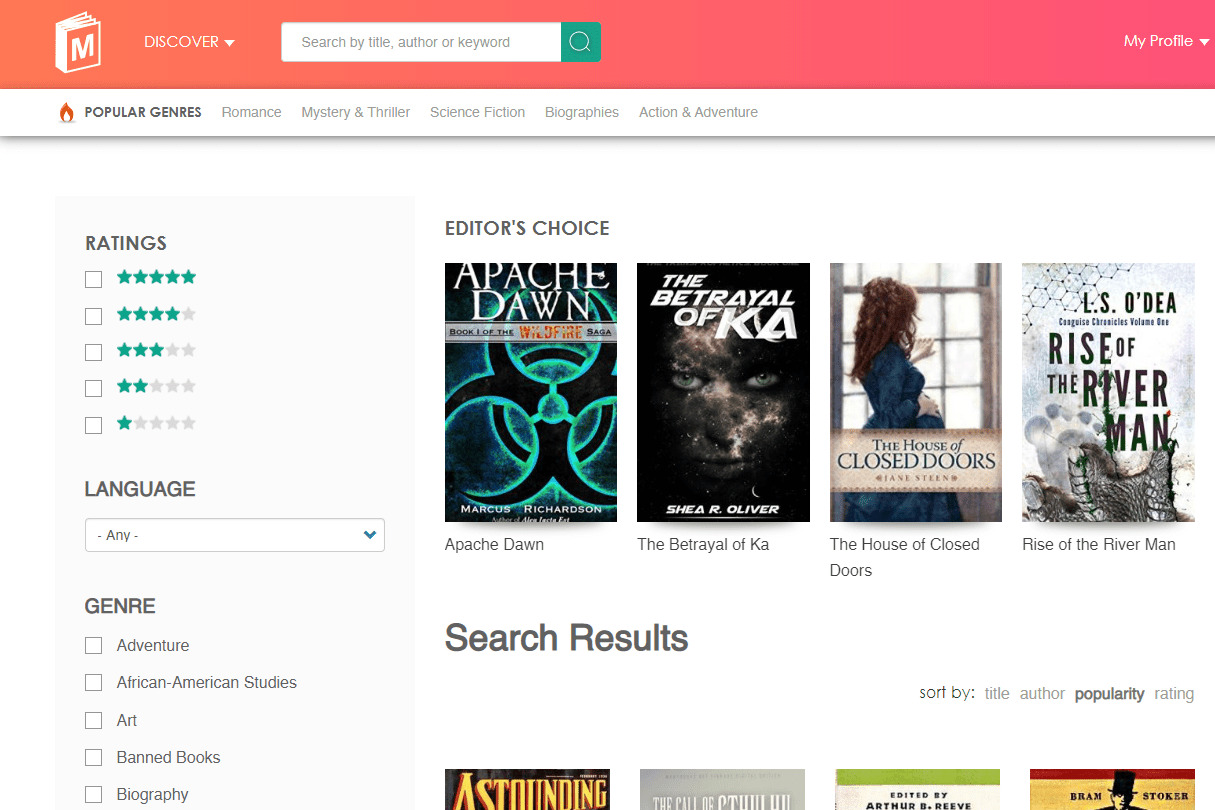Introduction
When it comes to eBooks, the size of the file may not be the first thing that comes to mind. However, it is an important factor to consider, as it can affect the overall reading experience and the convenience of storing and transferring eBook files. eBooks are digital versions of books that can be read on various devices, such as eReaders, tablets, and smartphones.
File size is particularly important when it comes to eBooks because it determines how much storage space is required and how long it takes to download or transfer the file. Whether you’re an avid reader or an author looking to publish an eBook, understanding the factors that influence file size and how to optimize it can make a significant difference in the quality of your eBook and its accessibility to readers.
In this article, we will explore why file size matters when it comes to eBooks and discuss the different types of eBooks and their impact on file size. We will also dive into the role of file formats in determining the size of eBooks and provide tips on how to reduce file size without compromising the reading experience.
By the end of this article, you will have a better understanding of the factors that contribute to eBook file size and the strategies you can implement to optimize it. So, let’s delve into the world of eBook file sizes and their significance in the digital reading landscape.
Why File Size Matters When It Comes to eBooks
File size plays a crucial role in the overall reading experience of eBooks. Here are a few reasons why it matters:
- Storage Space: eBooks come in various genres, and avid readers often have a vast collection on their devices. Large file sizes can quickly consume valuable storage space, especially on devices with limited memory. By reducing the file size of eBooks, readers can store more books without worrying about running out of space.
- Download and Transfer Time: When downloading or transferring eBooks, smaller file sizes make the entire process quicker and more convenient. Readers can easily download eBooks on their devices, even with slower internet connections, and authors can distribute their books more efficiently to readers around the world.
- Compatibility: Different devices and eBook reading apps may have specific limitations regarding file size. Large eBook files may not be compatible with certain devices or platforms, causing readability issues or even preventing the eBook from being opened altogether. Optimizing file size ensures compatibility across a wide range of devices and apps, allowing readers to enjoy eBooks seamlessly.
- Enhanced Reading Experience: A smaller file size can contribute to a better reading experience. eBooks with large file sizes may take longer to load, causing delays when flipping through pages or accessing specific chapters. By reducing the file size, readers can enjoy a smoother reading experience without interruptions or delays.
Considering these factors, it becomes clear why file size matters when it comes to eBooks. By prioritizing optimal file sizes, both readers and authors can benefit from improved storage efficiency, faster download and transfer times, enhanced compatibility, and an overall enhanced reading experience.
Text-based eBooks
Text-based eBooks are the most common type of eBooks available in the digital publishing world. These eBooks primarily consist of text and may contain minimal or no images. They are usually created using markup languages such as HTML or formats like EPUB or MOBI. Here are some factors that influence the file size of text-based eBooks:
- Content Length: The length of the eBook’s content directly affects its file size. Longer eBooks with more pages and chapters will naturally have larger file sizes compared to shorter ones. Authors and publishers can optimize the content by removing unnecessary or redundant text to reduce file size without compromising the reading experience.
- Fonts and Formatting: The choice of fonts and formatting styles can impact the file size of text-based eBooks. Complex or uncommon fonts may require embedding within the eBook file, increasing its size. Simple and widely available fonts can help reduce file size. Additionally, excessive formatting, such as multiple font styles and sizes, can also contribute to larger file sizes. Authors can optimize file size by using a consistent font and minimal formatting.
- Metadata: Metadata includes information such as title, author name, and book description. While essential for eBook organization and discoverability, metadata can contribute to file size. Optimizing metadata by keeping it concise and removing unnecessary details can help reduce file size without compromising book information.
- Compression: Compressing text-based eBooks can significantly reduce their file size. Tools and techniques like ZIP compression can compress the eBook files, making them smaller and more efficient to store and transfer. However, it’s important to use compression techniques that do not compromise the quality or readability of the eBook.
To create smaller file sizes for text-based eBooks, authors and publishers should focus on optimizing content length, font and formatting choices, metadata, and utilizing compression techniques when appropriate. By carefully considering these factors, readers can enjoy fast-loading eBooks that take up less storage space while retaining a high-quality reading experience.
Image-based eBooks
Image-based eBooks are a unique type of eBook that heavily relies on graphical content, such as illustrations, photographs, and diagrams, to deliver the intended message. These eBooks are often used in children’s books, graphic novels, and art books. Here are some key considerations regarding the file size of image-based eBooks:
- Image Resolution and Quality: The resolution and quality of images directly impact the file size of image-based eBooks. High-resolution images with intricate details will result in larger file sizes. Authors and publishers should strike a balance between image quality and file size by optimizing image resolution and using compression techniques to reduce file size while maintaining visual integrity.
- Image File Format: The file format of the images used in the eBook can affect the overall file size. Formats like JPEG and PNG are commonly used for images. JPEG files use compression algorithms that reduce file size but may sacrifice some image quality. On the other hand, PNG files offer lossless compression, resulting in larger file sizes. Choosing the appropriate file format for each image can help optimize file size.
- Image Compression: Compressing images is a crucial step in reducing file size for image-based eBooks. There are various compression techniques available, including adjusting image quality, resizing dimensions, and converting to more efficient file formats. However, it’s important to strike a balance between file size reduction and maintaining visual clarity.
- Number of Images: The total number of images included in the eBook also affects its file size. Authors and publishers should carefully consider which images are necessary and impactful to the storytelling or content, eliminating any unnecessary images. By reducing the number of images, the file size can be significantly minimized.
Creating image-based eBooks with smaller file sizes involves optimizing image resolution and quality, choosing the appropriate image file format, utilizing image compression techniques, and being mindful of the number of images included. By considering these factors, authors and publishers can ensure that image-based eBooks are visually captivating while still being easily accessible and convenient for readers.
The Impact of File Formats on eBook Size
The choice of file format for an eBook can have a significant impact on its file size. Different file formats have varying levels of compression and support for different types of content. Here are some common file formats used for eBooks and their impact on file size:
- EPUB: EPUB is one of the most popular file formats for eBooks. It offers efficient compression by utilizing ZIP compression for text, images, and other media. EPUB files can be significantly smaller in size compared to other formats, making them ideal for easy distribution and storage. EPUB also supports reflowable text, allowing readers to adjust the font size and layout based on their preferences.
- PDF: PDF (Portable Document Format), commonly used for documents, is also utilized for eBooks. PDF files can handle complex layouts, including fixed formatting and embedded images. However, PDFs are typically larger in size compared to EPUB files. This is because PDFs are designed to preserve the exact layout of the content, resulting in larger file sizes. PDFs are suitable for eBooks that require precise formatting, such as textbooks or technical manuals.
- MOBI: MOBI is a file format primarily used by Amazon Kindle eReaders. MOBI files can be slightly smaller than EPUBs, but they are similar in terms of compression and support for various content types. While MOBI is limited to Kindle devices and apps, it offers specific formatting features that cater to Amazon’s platform.
- AZW: AZW is another file format used exclusively for Kindle devices. Similar to MOBI, AZW files have a smaller file size compared to EPUB due to compression techniques specific to Amazon’s platform.
It’s important to consider the target devices and platforms when choosing an eBook file format. EPUB is widely supported on multiple platforms and devices, making it a versatile option. However, if the eBook is primarily intended for a specific platform like Kindle, using the native file format (MOBI or AZW) may offer better compatibility and features.
Converting between different eBook file formats can also impact file size. While conversion tools aim to retain the content and structure of the eBook, there might be slight variations in file size due to differences in compression algorithms and supported features.
Ultimately, the impact of file formats on eBook size depends on the content, target platforms, and desired features. By choosing the appropriate file format and considering the compression capabilities, authors can optimize eBooks for smaller file sizes without compromising the quality or functionality of the content.
How to Reduce eBook File Size
Reducing the file size of an eBook is crucial for optimizing storage space, improving download times, and enhancing the overall reading experience. Here are some effective strategies to help you reduce eBook file size:
- Optimize Images: If your eBook contains images, optimizing them can significantly reduce file size. Resize images to the appropriate dimensions for eBook display and compress them using tools or software that maintain image quality while minimizing file size.
- Choose the Right File Format: Selecting the appropriate file format for your eBook can make a noticeable difference in file size. For text-based eBooks, consider using EPUB, which offers efficient compression. For image-heavy eBooks, assess the pros and cons of PDF, EPUB, or other formats based on their support for image compression and layout preservation.
- Use Compression Techniques: Apply compression techniques to all elements of your eBook, including text, images, and metadata. Tools like ZIP compression can reduce file size without sacrificing quality. However, ensure that the compression does not negatively impact the readability or visual appeal of the eBook.
- Minimize File Metadata: Metadata, such as author information, book description, and keywords, can contribute to file size. Consider optimizing metadata by using concise and targeted descriptions without unnecessary details. This helps reduce file size while still providing essential information about the eBook.
- Remove Redundant Content: Evaluate your eBook for any duplicate or redundant content that could be removed. This may include repeated images, unnecessary formatting, or excessive white space. By streamlining the content, you can reduce the overall file size without compromising the integrity of the eBook.
- Limit Font and Formatting Variations: Excessive use of different fonts, font sizes, and formatting styles can increase file size. Opt for standard fonts and limit the number of font variations and formatting options used in your eBook. This helps to keep the file size manageable without sacrificing the visual appeal.
Implementing these strategies will help you create leaner and more optimized eBooks. Remember to test your reduced file size eBook on different devices and platforms to ensure compatibility and maintain the best possible reading experience for your readers.
Conclusion
Understanding the importance of file size in eBooks is essential for both readers and authors. The file size directly impacts storage space, download and transfer times, compatibility, and the overall reading experience. Whether you’re working with text-based eBooks or image-based eBooks, there are several strategies to help reduce file size without compromising the quality of the content.
For text-based eBooks, optimizing content length, fonts, formatting, metadata, and applying compression techniques can significantly reduce file size. By carefully considering these factors, authors can create eBooks that are both visually appealing and efficient in terms of storage and performance.
Image-based eBooks require special attention to image resolution, file formats, compression, and the number of images included. Balancing image quality and file size is crucial to maintain a visually captivating eBook while ensuring it remains accessible and easily downloadable.
Additionally, selecting the right file format for your eBook is essential. The choice between EPUB, PDF, MOBI, or other formats can impact file size and compatibility with different devices and platforms. Understanding the benefits and limitations of each format allows authors to make informed decisions that optimize file size and accessibility.
Reducing eBook file size through image optimization, compression techniques, content optimization, and metadata refinement not only enhances the reading experience but also improves storage efficiency and facilitates faster downloads. By implementing these strategies, authors can create eBooks that are convenient, accessible, and enjoyable for readers.
As technology advances and the demand for digital reading grows, optimizing eBook file sizes will continue to play a crucial role. By staying aware of the factors influencing file size and implementing effective strategies, authors can create eBooks that provide a seamless reading experience while being practical for storage and distribution.

























